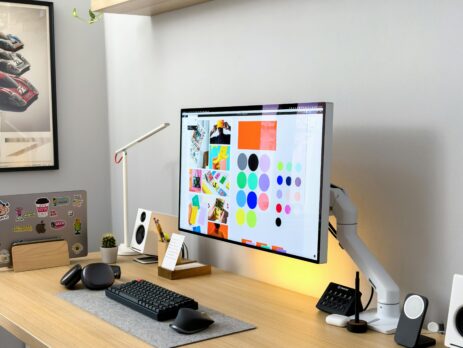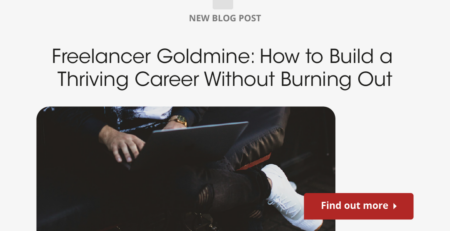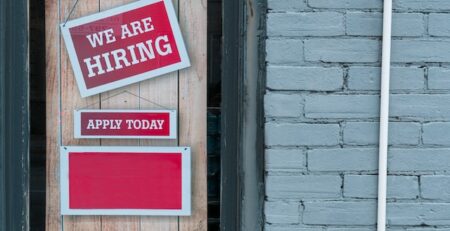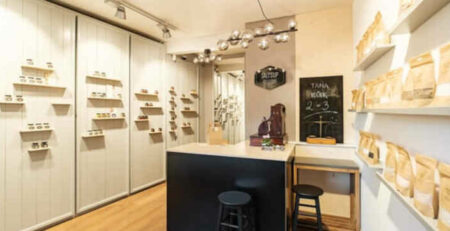Freelance UX Designer Career Path: What You Need to Know
There have been several changes to the system and nature of work, particularly since 2020. Since then, one of the major developments is the rise in work-from-home jobs and freelance careers.
These work formats offer several benefits, especially in boosting a work-life balance, and as such, many people are exploring the various options available. So, what do you need to know if you want to explore a career path in UX design as a freelancer?
What Is Freelance UX Design?
If you don’t know or aren’t entirely certain what freelance UX design is, here goes. UX design sees you being in charge of planning, structuring, and designing the user experience (UX) interface for a platform or product.
In essence, you determine the type of interaction an audience has with said platform or product, particularly how well or easily they find it to use. As a freelance UX designer, you typically work with several clients and can charge per hour or project.
Most businesses prefer to work with freelance professionals since UX design doesn’t necessarily require day-to-day hands-on staff throughout a platform or product. So, the contract is temporary.
Now, upgrades may be retained for upgrades; however, upgrades would occur much later or at specific periods. So, unlike an in-house UX designer who works solely with a company, you, as a freelance designer, can work for several clients, determining your workload and fee.
Why Is UX Design Important?
More daily activities are being conducted via phone. Pretty much everything is digitized now — even the basic things.
For instance, if you want transportation – Uber, accommodation while traveling – Airbnb, food – Uber Eats and DoorDash, amongst others. Practically everything that you can think of can be done via an app or website on your phone.
This is where UX design comes in. Beyond their efficiency, one of the major reasons why people stick with an app or website is ease of use. Usually, the app that is easier to navigate gets more traction than a competitor with a confusing interface.
In 2022 alone, people downloaded over 250 billion apps, expended $143 billion, and spent an average of four hours daily on their devices. This soaring digitization of life implies that UX designers are even more important in this mix since digital products are practically necessary.
How Do You Get On a Freelance UX Design Career Path?
As with any career type, the UX design career foundation has a certain element you need to put in place to position yourself for success. Here are the cogent ones.
Develop UX Design Skills
The most basic requirement to becoming a UX designer is first to understand what it is about – the fundamentals of user experience design. You want to know the various elements critical to creating an excellent design and be proficient at using the software necessary, too.
For instance, tools like Figma, Adobe InDesign, and Adobe Illustrator are some basics to learn how to navigate. The skills necessary to be an excellent UX designer can be divided into hard and soft skills. Some of the necessary hard skills for UX designers include:
- Creating wireframes
- Creating user personas
- Building prototypes, and
- Understanding the psychology and theory of design
- HTML
- Information Architecture
- Programming languages
- User research
- Interactive and responsive design
- Visual communication
Most people learn these skills via formal education or simply by training or attending boot camps and studying courses. If there’s a chance that you would be incorporating mobile app development into your services, then you should start to learn how the Android and iOS operating systems work and their influence on user interface design.
For soft skills, there are two crucial components:
- Communication
- Storytelling
These skills are typically developed gradually; over time, they become entrenched in every project you are working on.

Work On Real Projects
When you feel confident enough, or even when you’re not, you should start working on real projects. You don’t necessarily have to wait to get a design gig or job to start. There are several other options, such as taking an online course with a portfolio component.
These courses usually require you to complete assignments that you can include in your portfolio once you’re done. This is why you should treat these assignments as real-life projects. If you do an excellent job on these designs, your work will easily stand out to recruiters looking to hire freelance UX designers.
Consider applying to internships with startups or other such companies. An internship allows you to get real-life experience and gainful employment after a while. You can improve critical elements like user research, web design, interaction design, and other elements.
This also lets you connect with professionals in other creative spaces, such as product designers, graphic designers, and web developers. This opens you up to future collaborations in addition to gaining a ton of knowledge and experience.
Build Your UX Design Portfolio
Recall the projects you worked on while taking courses and those you worked on during the internship. These would be the constituents of your UX design portfolio. As a new designer, try including at least three of your best works in your portfolio.
Designers with more experience can stick with five. To make your portfolio even better, ensure that your design inclusions are quite versatile and you back them up with the design case studies.
What this means is that you justify why you did the things you did with the design, what results it is meant to achieve, and what you put in place to ensure these goals are accomplished.
Here’s what each case study should cover:
- Background of client: if you can make the company, do. If not, simply explain the sort of products or services that they render. A brief description is sufficient.
- Design challenge: this details the problems that the client was facing design-wise. It clearly shows why the client required your services.
- Constraints: explain whether you had certain factors to contend with, such as a capped budget or a tight deadline.
- Solution: this section goes to show just how knowledgeable you are. Give a summary of the solution you provided to the problem.
- Design process: you can use this section to detail your entire process, from brainstorming to execution. Explain the reasons for the actions you took while crafting the design solution. This gives potential clients a clear idea of how you would get their work done.
- Results: this is where you toot your horn a bit. Did the design help the client? Did it effectively handle the problem it was supposed to?
- Conclusion: you can reiterate points you think are crucial and round up with a subtle call to action (for instance, you could say that you chose this particular process for this case, and for another, you are open to adapting your process).
Create a Freelance Profile
Once your portfolio looks good, the next step is to seek clients. One surefire way to find these clients is to sign up for a freelancing platform. This allows you to submit proposals to gigs that interest you and are suited to your skill set.
You also get to negotiate how much you would charge and work within a reasonable deadline. The more experience and traction you get on the platform, the higher your earnings and the better the jobs that come your way.
Cultivate a Social Media Presence
To put it in loose terms, the bulk of the jobs you would get as a freelance UX designer would be from strangers on the internet. With social media, you can market yourself effectively and land excellent deals. What you mostly need to do is set up a profile and find creative ways to detail your services.
Post about projects you’re working on, discuss the challenges you encountered, interact with other design professionals, and share knowledge. These are strategies to market yourself and are super effective, too.
A LinkedIn account can also do wonders for your professionalism, and you can approach businesses and agencies and network. There are job opportunities that are fully remote or freelance for you to explore, too.
Facebook and Instagram are great platforms to post images and links to your projects and even run sponsored adverts targeting a niche market. For this, ensure you post top-quality content and consider leaving a watermark or logo to discourage design theft.
You must post regularly and engage for your social media strategy to work. Building your presence is a gradual process; you need to keep at it for a while to get the results you want eventually.
Get a Website
A website can serve two functions. First, the primary function is to showcase everything you want about your work and experience. You can also indicate your availability, pricing, other services, and all the information a potential client needs.
Your website must be properly organized to allow visitors to access the content easily. Your contact information should be prominent, and you should ensure your web content is optimized for search engines.
For instance, if you live in Ohio, you could include relevant keywords like “freelance UX designer in Ohio” or “freelance UX designer for B2b companies.” Look into getting testimonials on your website, too.
After completing some projects, have some satisfied clients leave a heartfelt review detailing their experience with you. The use of these testimonials is that it convinces prospective clients to work with you and enjoy a similar experience. They would also be more confident in your abilities.
The second or secondary function a website can serve is it positions you as a professional. Professionalism has several elements, and having a website is one of those.
Keep Learning
The world of UX design is a constantly evolving one, and as such, you should be investing in self-development while executing projects. Learn how to use new software, how to implement new aspects of designs, and stay up to date on the latest design trends. This allows you to become more valuable; you could begin to charge big bucks over time.
What Are the Perks of Being a Freelance UX Designer?
There are several upsides to treading the freelance UX designer path, several of which are not available to the fully employed. Here are some of the interesting perks you don’t want to miss out on:
Freedom
This is all-encompassing. You decide what kind of brands you want to work with and what projects you want to work on. You can pick and choose depending on what you think is best for you. In addition, you get to enjoy loads of job satisfaction since you would pretty much choose projects you know you would enjoy working on.
Structure Your Own Time
Unlike paid employment, where you absolutely have to work from 9-5, being a freelance UX designer implies that you dictate your hours. Depending on the project you’re working on, you can decide how many hours per day you want to devote to meet the deadline. In addition, you’re paid for the project, not necessarily the number of hours you put in.
So, if you round up a project in record time, you don’t get your pay cut because it didn’t take as long as you thought. Also, since you decide when you want to work, you can do other things like go out with friends, take vacations, take days off, and enjoy loads of freedom.
High Income Potential
Unlike salaried jobs, where your income is capped unless you get a promotion, a freelance career implies you can raise your income at any point. You decide the rates you want to charge for your services and the number of projects you want to handle.
When you get really good, you can have clients wait for you to complete other projects before getting to theirs. You could expand by taking on someone to help with other areas, allowing you more time to work on projects and increase your income.
No Location Restriction
Since you work freelance, you can practically work from anywhere in the world. The possibilities are endless on the go, on vacation, on the train, in a bus. Provided you have a stable internet connection, you’re good to go!

Conclusion
Conclusion
Embarking on a freelance UX design career offers a significant opportunity to engage in work you are passionate about while earning a living. Like any profession, it demands time and considerable effort. By adhering to the guidelines and suggestions outlined in this article, you can establish a solid foundation for success. For further resources and specialized support, consider connecting with icreatives staffing agency.
In today’s competitive market, finding the right creative and marketing expert can be a challenge. But with icreatives, you’re in experienced hands. With 37 years in staffing and a track record of matching more than 10,000 employees to over 1,000 companies worldwide, we know how to connect you with the best. Plus, you only pay if you hire—there’s no risk, only results.
Ready to find your perfect creative or marketing expert? HIRE WITH ICREATIVES today!












